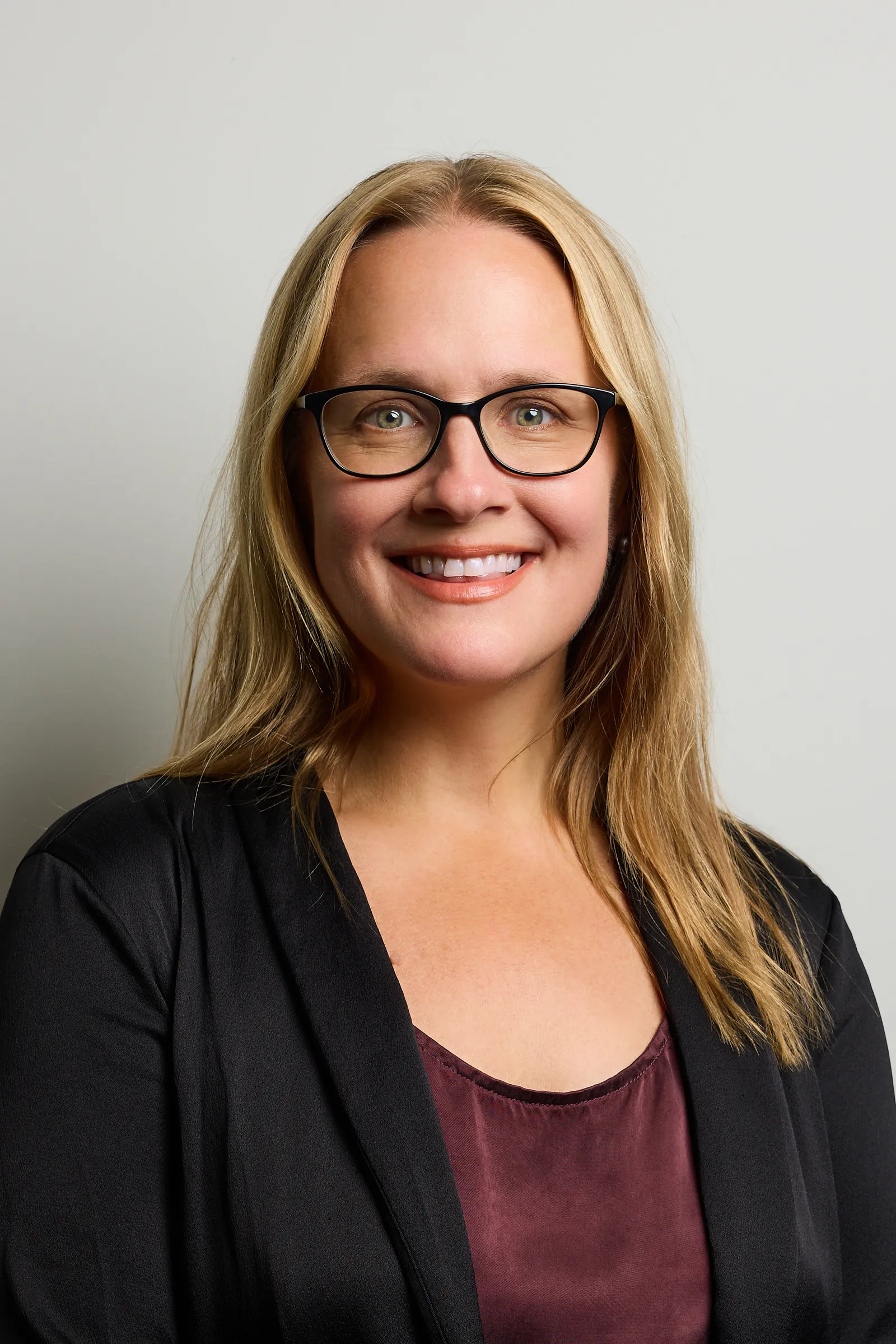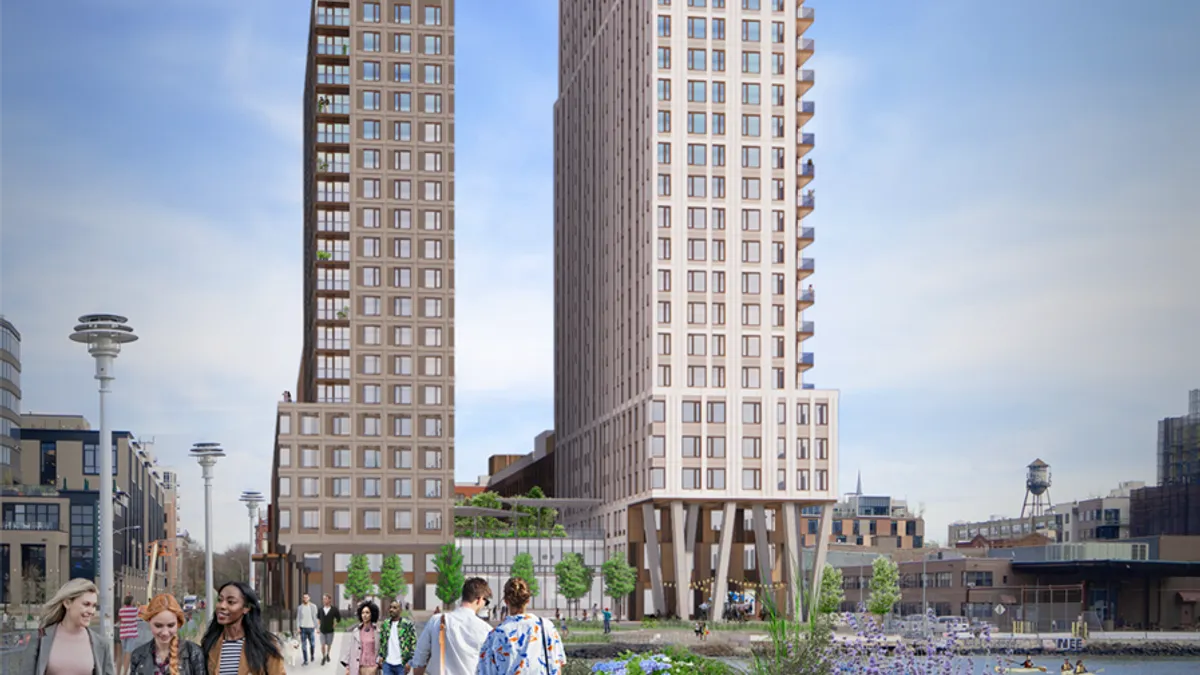Lendlease wanted to find a new ingredient to help reduce the carbon footprint of its cement mix.
Replacement materials for Portland cement frequently use slag cement and fly ash — byproducts of steel production and coal-fired power generation, respectively, so instead Lendlease pivoted elsewhere for a plentiful substance: recycled glass.
“We know that there's a lot of glass available because, unfortunately, the U.S. is not fantastic about recycling glass through municipal recycling,” said Amanda Kaminsky, director of sustainable construction for Lendlease’s Americas portfolio.
For its 1 Java Street project in Brooklyn, New York — a 834-unit residential development that broke ground in April — Lendlease replaced 40% of the foundation concrete’s Portland cement with ground glass pozzolan.
The material not only lowers the embodied carbon of the concrete, it also utilizes waste from municipal glass recycling programs, which don’t always have an end market, according to Lendlease. In addition, the ground glass product is less permeable than cement made with slag or fly ash mixes, the company says.
When finished, Lendlease claims 1 Java Street will be fully electric and become New York state’s largest geothermal residential building.
Here, Kaminsky talks with Construction Dive about the 1 Java Street project and efforts to make projects more sustainable in the future.
The following has been edited for brevity and clarity.
CONSTRUCTION DIVE: What is your biggest takeaway from the 1 Java Street project?

AMANDA KAMINSKY: I think making sure that you engage with the supplier, structural engineer and subcontractor early on to ensure there's buy-in from everybody involved. Also, testing [the concrete] before we decide on the final mixes.
It's just a matter of choosing your partners carefully and thinking ahead to what the marketplace is going to look like five years down the road, seven years down the road, 10 years down the road. Are there steps that we can be taking right now to prime ourselves and the industry for that?
You teed me up for my next question. What does five, seven, 10 years down the road look like to you?
There are a lot more innovations coming into play. One of the reasons we're focused where we're focused right now is because these are materials that are available right now. But I do think there's going to be options that enable us to even more fully decarbonize, and we will become more efficient with the materials that we're purchasing.
We have our work cut out for us right now too, it can't just be the manufacturers like working in their laboratories and factories. We have to be hyper collaborative with them right now.
Why is it important from both a business perspective and a sustainability perspective for companies like Lendlease to be leaders in this space?
Well, because business as usual is easy, right? And so if we don't communicate what we are looking for and collaborate based on the performance that we're looking for from a traditional perspective, the market is likely to stagnate. Sometimes we've run out of materials, and then all of a sudden it's sort of a knee-jerk reaction to them, but then there's a learning curve. Every material performs a little bit differently.
We're trying to be proactive about preparing alongside all of our partners. Do you specify all these materials? How do they perform differently? Does it affect the schedule? Does it affect budget? What does the supply chain look like? You have to go through some iterations to really get fully streamlined with it. We don't want that to be an emergency. We're trying to be more proactive and work some of these newer materials in as soon as possible.
There's also just a general urgency with what's happening with the climate. We think it's good business sense collectively for everyone to be looking at how we can be more efficient while also using as little new materials as we can. But then when we do need to use materials, how do we make them most efficiently with the least amount of energy and the most reduced impact possible?
What are the biggest challenges to breaking out of business as usual?
There is an inherent inertia to change in our industry. And sometimes it's for a good reason where people are just being very careful and you have to be very careful with structures. And it just so happens that a lot of our structural materials are the ones with the biggest carbon impact, and that's where we're wanting to see most change and evolution happen.
So, there is a tension there. That's why it has to be sort of incremental. We're really prioritizing working with partners that have that right balance of being very proactive, but super smart and careful in how we make these shifts over time. If you don't have the right partners, that inertia can be a huge challenge, just because people like to do what they know.
What is your response to those who push back on climate change?
Well, I think there's some really clear data on the temperature rise. It's very easy to show that. But frankly, even if people don't believe in climate change, there's a lot of reasons to make some of these shifts.
From a smart business perspective, I think diversification of options always makes good sense. It never makes sense to be beholden to just one supplier or just one material. The other challenge that we're dealing with some of our lower-carbon concrete options or more energy-efficient concrete options is a supply chain that's not domestic. And so we're really dependent on materials coming in from abroad, the potential that they could get stuck at port or everything just takes a little longer.
So, it's just smart business to diversify those options and to look at what makes sense, what's performing well. We're not just just gonna switch to something that's more sustainable that also doesn't have the reasonable performance that we're looking for.






















